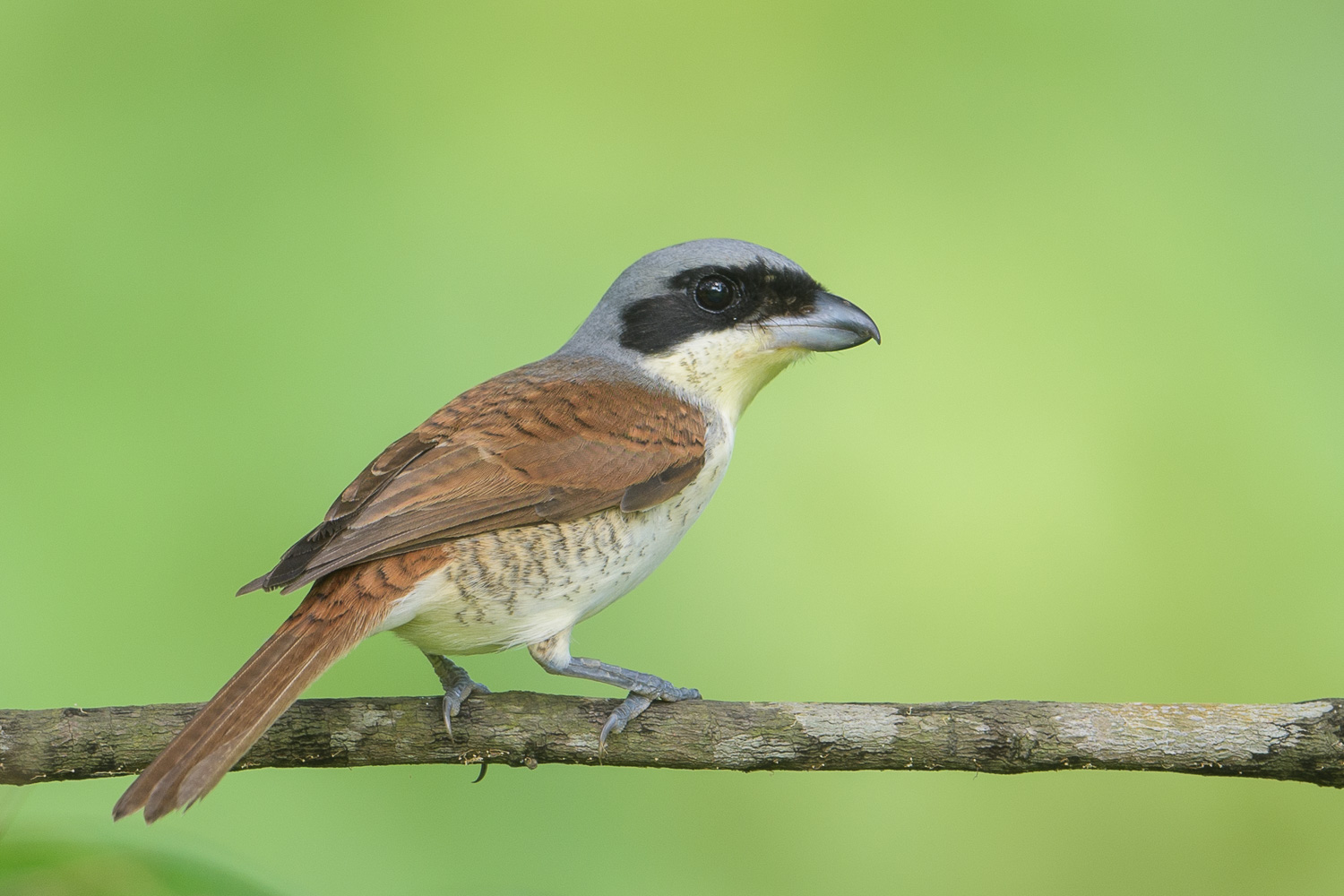Scientific Name: Lanius tigrinus
Malay Name: Tirjup Harimau
Chinese Name: 虎纹伯劳
Range: Found from Eastern Russia, China, Japan to Korea, wintering to mainland Southeast Asia and Indonesia.
Taxonomy: Monotypic.
Size: 17-18.5 cm
Identification: Adult males (rare in Singapore) have white underparts, thick eyestripe, scaly chestnut lower back that contrasts strongly with slate-grey upper mantle, nape, and crown. Females like males but have scaly underparts and overall duller plumage. Immatures and juveniles are very scaly overall. Birds of all ages show a “clean”, unscaled and rufous tail.
Similar looking species: Brown Shrike, Long-tailed Shrike
Habitat: Well-wooded areas, secondary growth and forest edge.
Behaviour/Ecology: Feeds on insects, lizards, small birds and rodents.
Local Status: Common migrant
Conservation Status: Least Concern (BirdLife International 2016)
Location: Any patch of suitable wooded area.
Migrant bar chart (see more bar charts):
Conservation Status: IUCN Red List Page
Sound Recordings: xeno-canto Link
Wikipedia Entry: Wikipedia Link
eBird Species page: eBird (Tiger Shrike)
References:
BirdLife International. (2016). Lanius tigrinus. The IUCN Red List of Threatened Species 2016. https://dx.doi.org/10.2305/IUCN.UK.2016-3.RLTS.T22704995A93994458.en. Accessed on 1 January 2023
Robson, C. (2014). Field guide to the birds of South-East Asia (Second Edition). Bloomsbury Publishing, London.
Wells, D. R. (1999). The Birds of the Thai-Malay Peninsula (Vol. 1). Academic Press, London.
RECOMMENDED CITATION
Bird Society of Singapore. (n.d.). Tiger Shrike. Retrieved on April 25, 2024 from https://singaporebirds.com/species/tiger-shrike.









